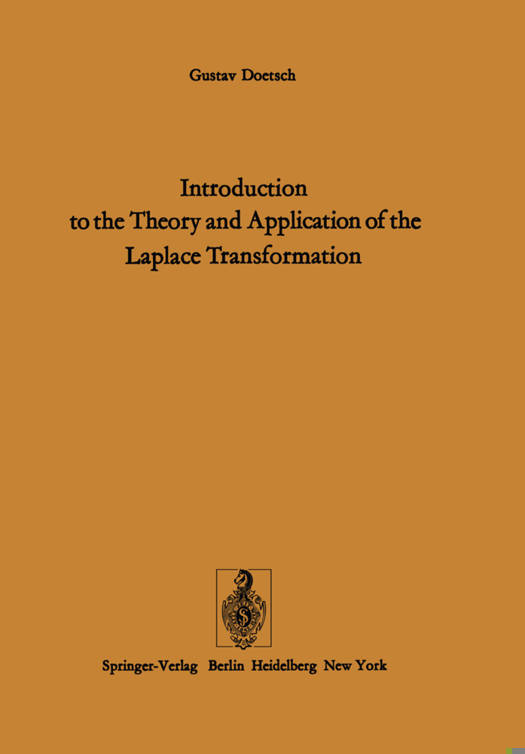
- Afhalen na 1 uur in een winkel met voorraad
- Gratis thuislevering in België vanaf € 30
- Ruim aanbod met 7 miljoen producten
- Afhalen na 1 uur in een winkel met voorraad
- Gratis thuislevering in België vanaf € 30
- Ruim aanbod met 7 miljoen producten
Zoeken
Introduction to the Theory and Application of the Laplace Transformation
G Doetsch
Paperback | Engels
€ 104,95
+ 209 punten
Omschrijving
In anglo-american literature there exist numerous books, devoted to the application of the Laplace transformation in technical domains such as electrotechnics, mechanics etc. Chiefly, they treat problems which, in mathematical language, are governed by ordi- nary and partial differential equations, in various physically dressed forms. The theoretical foundations of the Laplace transformation are presented usually only in a simplified manner, presuming special properties with respect to the transformed func- tions, which allow easy proofs. By contrast, the present book intends principally to develop those parts of the theory of the Laplace transformation, which are needed by mathematicians, physicists a, nd engineers in their daily routine work, but in complete generality and with detailed, exact proofs. The applications to other mathematical domains and to technical prob- lems are inserted, when the theory is adequately- developed to present the tools necessary for their treatment. Since the book proceeds, not in a rigorously systematic manner, but rather from easier to more difficult topics, it is suited to be read from the beginning as a textbook, when one wishes to familiarize oneself for the first time with the Laplace transforma- tion. For those who are interested only in particular details, all results are specified in "Theorems" with explicitly formulated assumptions and assertions. Chapters 1-14 treat the question of convergence and the mapping properties of the Laplace transformation. The interpretation of the transformation as the mapping of one function space to another (original and image functions) constitutes the dom- inating idea of all subsequent considerations.
Specificaties

Alleen bij Standaard Boekhandel
+ 209 punten op je klantenkaart van Standaard Boekhandel
Beoordelingen
We publiceren alleen reviews die voldoen aan de voorwaarden voor reviews. Bekijk onze voorwaarden voor reviews.








